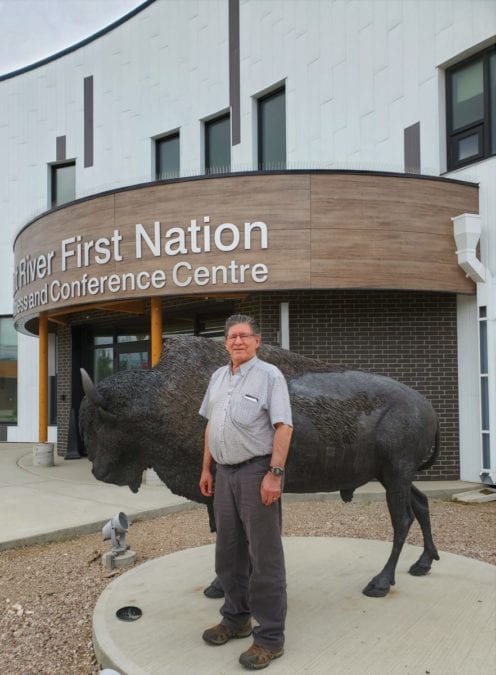Salt River First Nation Chief David Poitras describes a time decades ago when the band was all living in what was called 'Indian Village,' an area where they could be unified in one place.

photo courtesy of Jeff Fraser/Salt River First Nation
In 1968, a landslide destroyed the village and scattered its residents all over Fort Smith.
“It totally disrupted our whole band,” Poitras says. “All our relationships and communications and Elders got spread out and it’s never been the same for our band again.”
Now, Salt River First Nation (SRFN) is looking to rebuild with a project that would entail 39 homes on serviced lots integrated with Fort Smith’s water, sewer and street systems.
“It’s rebuilding our nation,” says Poitras. “We won’t get all of our band members down there this year but maybe in the next 10 years or 20 years living on reserve.”
The development project, in negotiations for over a decade, is being pulled back into the spotlight as communities seek to put Covid emergency response funding in the hands of their people.
The $16.8-million "shovel-ready" infrastructure project would create 70 jobs for community members and would allow residents to take ownership of their growth, rather than having external corporations coming in, breaking ground, earning profits, and then leaving, according to Dene National Chief Normal Yakeleya.
“My big push for now is to the federal government and the territorial government to directly put the money into the hands of the people who know best what economic stimulus needs to happen in the communities,” said Yakeleya during a teleconference last week. “It’s high time that communities take on their own wellbeing and not be dependent so strongly on the federal government and the territorial government dictating what projects should be done in the community... It’s just a bureaucratic process that’s getting in the way of the people’s aspirations and their desires of their well being."
Poitras says that the First Nations Finance Authority – a non-profit, Indigenous-run entity – is willing to amortize the costs for the project, “so it’s not like the federal government is going to have to put out $16.8 million right off the bat,” he says.
Once they receive the green light to get started, Poitras suspects the project could get underway in a matter of months.
“We’ve done all the buffing and things like that, so it’s pretty much ready to go once the feds approve it,” he says.
With dollars circulating through Covid economic stimulus recovery plans, for SRFN, this proposal has risen to the top of the agenda.
“It is so important for us to get our nation back together,” Poitras says.
Crown-Indigenous Relations and Northern Development Canada, the federal department handling the file, was not able to be reached for comment prior to publication deadline.
Yakeleya is calling on all levels of government to step up, and “walk the talk” of their promises to Indigenous people.
“Why don’t we invest in our own people, in our own communities, with our own companies,” he said. “Right now, there are too many people walking around in our community in hopelessness, not doing too much, and then we wonder why they get into trouble, why they are doing things that are not healthy for the community. We’ve got to take a giant leap and ask the federal government once again, do you really mean what you’re saying?”